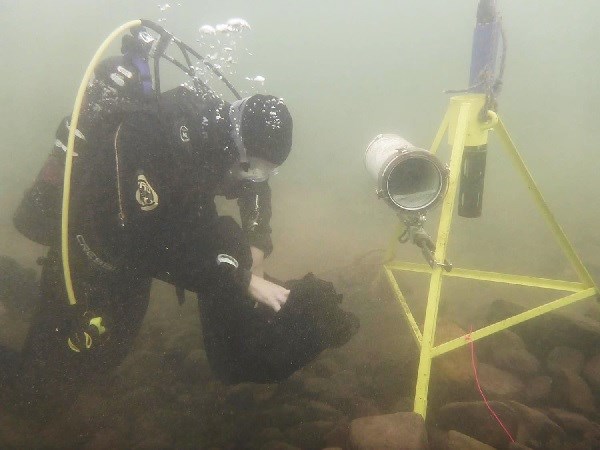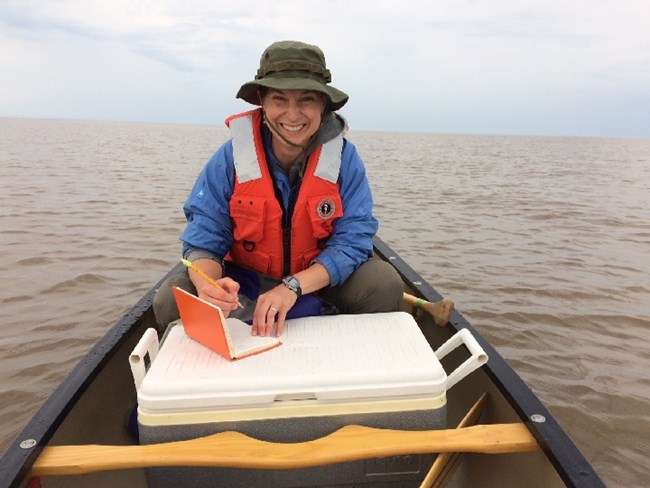
Photo by Brenda Moraska Lafrancois

Photo by David VanderMeulen
During 2018, the monitoring station near Myers Beach did double duty, helping document impacts from a historic flood event in June and a notable algal bloom in August. Dr. Moraska Lafrancois and a team of researchers from the University of Minnesota's Large Lakes Observatory kept the nearshore monitoring equipment running throughout the season and collected water quality and algal samples from several tributary and nearshore sites. Results are being used to understand how flood events and algal blooms affect nearshore water quality and public safety.
Last updated: September 28, 2021
